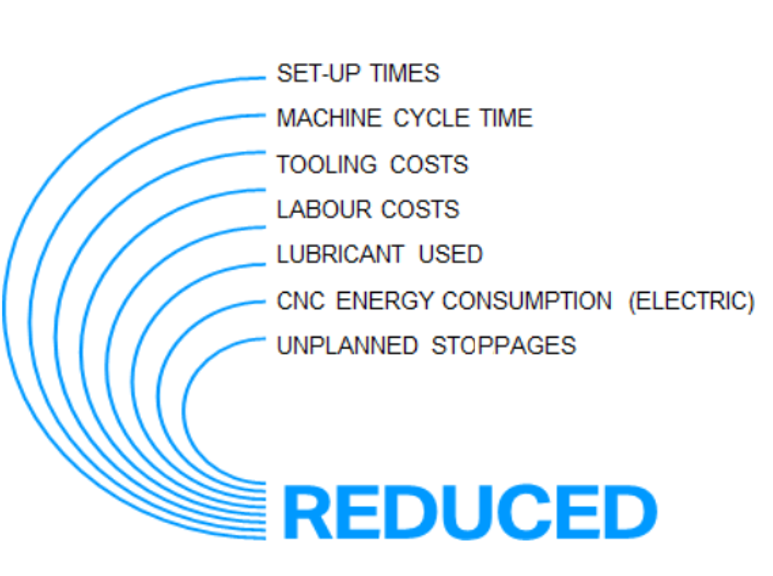
- Minimize downtime
- Maximize utilization
- Enable standardization
- Reduce component costs
Manufacturers employ a wide range of machining processes to produce complex components from a variety of stainless steel materials. New developments and technological advances in machine tools allow manufacturers to machine parts with tighter tolerances and a better finish, at a lower cycle time with increased efficiency.
A higher volume of desired quality products at a lower cost is therefore expected. But if the raw material used does not have the quality and consistency as the rest of the system, then the whole machining operation will fail to achieve the expected cost-effectiveness. Most often the raw material quality determines the ultimate efficiency of a machining operation.
Achieving better quality finished products with a lower total machining cost requires the workpiece material to be of high quality and consistency. If the machined parts do not achieve the level of quality required by the end customer specification, reworking or scrapping of the components will result. A waste of time and money!
Why is workpiece consistency needed?
Producing defective parts comes at a high price, not only in material, labor, and machine time but also in disruption of production plans. When one or more elements in the production process is misunderstood or out of control, defective parts result. In a reactive response to part quality problems, some manufacturers put intensive effort into manipulating aspects of the production process that in the end are not consequential. In some cases, the crucial factor of workpiece material quality and consistency is even ignored.
Maximum utilization of manufacturing resources requires minimizing downtime, which, put simply, is the period when the machine tool is not making chips. Some downtime is necessary and planned. This includes the time spent programming and maintaining the machine tool, installing fixturing, loading and unloading workpieces and changing tooling.
Manufacturers account for planned downtime in their production schedules. However, production of unacceptable parts results in unplanned downtime. When a rejected workpiece must be reworked, the time consumed originally machining it represents unplanned downtime and is wasted.
Inconsistent workpiece quality makes standardization of the machining process very difficult and causes downtime for setting up and adjusting the machining data.
Stainless steel round bar production is a batch process and having control of the end-to-end process is mandatory for producing consistent quality products from batch to batch.
Along with consistency in chemical composition and mechanical properties, it is also important to have consistency in straightness and ovality of the material, which will allow a mass production facility to have better standardized operations and in turn, will reduce the overall cost of component manufacture.

Sanmac® guarantees your workpiece consistency
Rely on our extensive material knowledge and you will rest assured about product quality and consistency in materials supply.
We developed our improved machinability concept Sanmac® decades ago and the science behind it is not only the addition of sulfur and non-metallic inclusions that reduces friction between the cutting tool and the material. Our tight control of the chemical composition and microstructure also gives consistent material behavior, batch after batch.
Sanmac® materials provide a tight tolerance diameter with a clean and even surface, making it easy for the operator to set the first cut correctly, with minimal stock, and still cut the part cleanly. Also, the batch to batch material consistency we provide, makes the run-in time of the part short, as the same program and cutting data can be used as for the previously machined components. No additional trialing cuts are necessary. This reduces machine idle time and increases utilization.